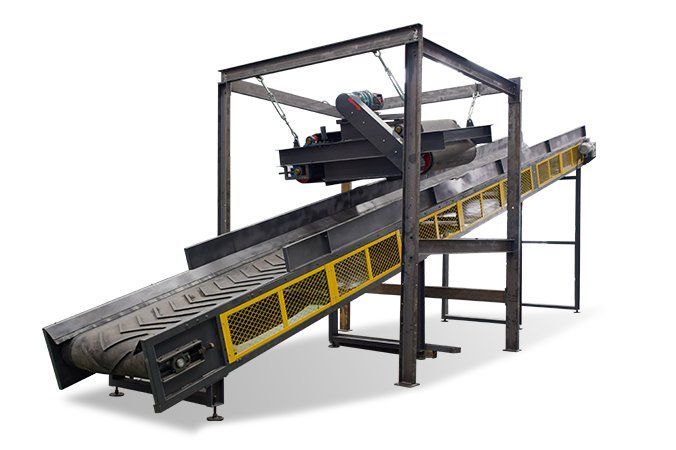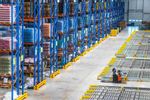
Magnetic Separator Machine Overview: Explore Key Facts, Working Principles, and Essential Insights
Magnetic separator machines are essential tools in material processing industries. They are designed to separate magnetic materials from non-magnetic substances using the principle of magnetism. These machines are widely used in mining, recycling, ceramics, chemical processing, and food production to ensure product purity and improve operational efficiency.
The idea behind magnetic separation originated in the early 20th century, primarily for mining and metal purification. Over time, technological innovations have enhanced the design and efficiency of these machines, making them indispensable in multiple sectors. Modern versions use strong rare-earth magnets, automated sensors, and variable-speed belts to achieve higher precision and energy efficiency.
Why Magnetic Separation Matters
Magnetic separation plays a crucial role in ensuring product quality, safety, and environmental sustainability. Industries that deal with raw materials such as minerals, food grains, or plastics often face contamination from ferrous particles. These impurities can damage equipment, lower product quality, and violate safety regulations.
By incorporating magnetic separator machines, companies can:
-
Protect Equipment: Prevent mechanical wear and tear caused by metal contamination.
-
Improve Product Purity: Maintain consistent quality standards, especially in food and pharmaceutical production.
-
Enhance Efficiency: Reduce manual inspection and processing time.
-
Support Sustainability: Enable recycling of ferrous materials and minimize waste.
Magnetic separation also contributes to cleaner production systems, helping industries comply with international environmental and safety standards. As global industries move toward sustainable production and resource recovery, the importance of these machines continues to grow.
Working Principles and Types of Magnetic Separator Machines
Magnetic separator machines function on the principle of magnetic attraction. When a mixture passes through a magnetic field, the ferrous or magnetic particles are attracted toward the magnet, while non-magnetic materials continue their path.
There are several types of magnetic separators used across industries, each designed for specific applications:
| Type of Separator | Description | Common Applications |
|---|---|---|
| Drum Magnetic Separator | Rotating drum attracts magnetic particles and separates them from bulk material. | Mining, recycling, cement industries |
| Overband Magnetic Separator | Suspended magnet installed over conveyors to remove tramp metal. | Coal handling, aggregate plants |
| Roller Magnetic Separator | Uses multiple magnetic rollers to achieve high-gradient separation. | Mineral beneficiation, ceramics |
| High-Intensity Magnetic Separator | Employs strong rare-earth magnets for fine particle separation. | Chemical, plastic, and food industries |
| Liquid Line Magnetic Separator | Designed for liquid or slurry materials to remove iron contamination. | Dairy, paint, and chemical processing |
The performance of a magnetic separator depends on the magnetic field strength, feed rate, and particle size. Modern separators integrate digital control systems, enabling operators to monitor separation efficiency and make real-time adjustments.
Recent Trends and Technological Developments
In 2024 and 2025, the magnetic separation industry has witnessed significant technological progress aimed at improving precision, automation, and sustainability. Some key developments include:
-
Integration with AI and IoT: Modern magnetic separators are now equipped with sensors that provide real-time data on material flow, metal detection, and operational performance. AI-based systems automatically adjust parameters to optimize output.
-
Energy-Efficient Designs: Manufacturers are focusing on low-energy motors and optimized magnetic circuits to reduce power consumption without compromising separation efficiency.
-
Recycling Applications: Increased demand for recycling electronic waste (e-waste) and scrap metals has driven the adoption of high-gradient magnetic separators.
-
Advanced Magnet Materials: The use of neodymium (NdFeB) and samarium-cobalt (SmCo) magnets has improved the strength and durability of machines, enabling efficient separation of ultra-fine particles.
-
Environmental Compliance: As countries strengthen environmental regulations, industries are adopting magnetic separators to reduce contamination and achieve compliance with ISO 14001 environmental standards.
For instance, in 2024, several mining industries in Asia and Europe adopted automated magnetic separation systems with machine learning algorithms to enhance ore quality and recovery rates. This trend reflects a broader movement toward intelligent manufacturing in heavy industries.
Policies, Standards, and Regulations
Government policies and industrial standards play an important role in guiding how magnetic separation technologies are used. These policies ensure safety, energy efficiency, and environmental responsibility.
Some relevant international and regional guidelines include:
-
ISO 9001 & ISO 14001: Ensure quality management and environmental compliance in manufacturing and operation.
-
European Machinery Directive (2006/42/EC): Regulates the safety of industrial equipment, including magnetic separators.
-
Food Safety Standards (HACCP, FSSC 22000): Require magnetic detection systems in food production lines to eliminate metal contamination.
-
Mining and Mineral Standards (ASTM, BIS): Define acceptable magnetic purity levels for processed minerals and ores.
In India, the Bureau of Indian Standards (BIS) provides specifications for magnetic separators used in mineral processing industries, ensuring consistency and safety across operations. Similarly, in the United States, compliance with the Occupational Safety and Health Administration (OSHA) ensures operator safety and maintenance standards.
These regulations help maintain uniform quality and safety levels across industries, ensuring that magnetic separator machines meet the necessary performance benchmarks.
Tools and Resources for Further Exploration
Professionals and learners can explore a range of tools, calculators, and databases related to magnetic separation. These resources support performance analysis, machine selection, and educational learning.
-
Magnetic Field Calculators: Estimate the magnetic field strength required for a given material type and size.
-
Material Compatibility Charts: Compare how different materials respond to various magnetic field strengths.
-
Engineering Simulation Software: Tools like ANSYS Maxwell and COMSOL Multiphysics help model magnetic circuits.
-
Technical Standards Portals: Access international standards via ISO or ASTM databases for reference.
-
Industrial Data Platforms: Research organizations like ResearchGate and ScienceDirect publish technical papers on magnetic separation efficiency and design improvements.
For educational insights, technical institutes and online platforms offer simulation-based learning modules explaining magnetic separation mechanisms. These help engineers and students understand both theory and application in real-world scenarios.
Frequently Asked Questions (FAQs)
1. What materials can be separated using magnetic separators?
Magnetic separators are effective for separating ferrous metals such as iron, steel, and magnetite from non-magnetic materials like plastic, glass, or sand. Specialized designs can also handle fine iron particles in powders or liquids.
2. How is magnetic field strength measured in these machines?
Magnetic field strength is typically measured in Gauss or Tesla. The required intensity depends on material type and application—for example, low-intensity fields (up to 2,000 Gauss) for coarse materials and high-intensity fields (over 10,000 Gauss) for fine powders.
3. What maintenance does a magnetic separator require?
Regular cleaning of magnetic surfaces, inspection for wear, and checking sensor calibration are essential. Modern separators with self-cleaning mechanisms reduce maintenance frequency.
4. Are magnetic separator machines environmentally friendly?
Yes, they contribute to sustainable operations by reducing waste, enabling material recovery, and preventing contamination in production lines. Energy-efficient models further lower environmental impact.
5. Can magnetic separators be customized for different industries?
Yes, manufacturers design custom configurations based on material flow, particle size, and required purity levels. Variations include dry, wet, and high-gradient models.
Conclusion
Magnetic separator machines remain a cornerstone of modern industrial processing. They combine fundamental physics with advanced engineering to achieve precise separation, ensuring safety, efficiency, and sustainability. From mining and recycling to food and chemical industries, their applications continue to expand as technology evolves.
With continuous innovation in magnet materials, automation, and environmental compliance, the future of magnetic separation looks promising. As industries worldwide prioritize cleaner and smarter production systems, magnetic separator machines will remain vital to achieving these goals.






